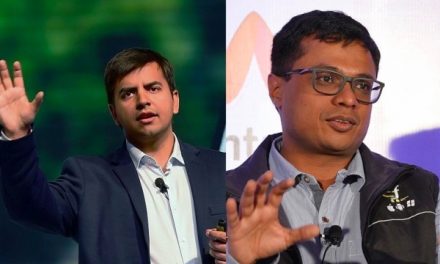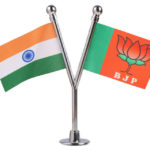“IT mein Growth kaun Laaya”
I recently happened to see some videos of Rahul Gandhi’s speeches. A common refrain in many of his speeches is about how Congress and Rajiv Gandhi brought Computers and the IT revolution to India. He blames opposition for first trying to scuttle the computer revolution and later trying to take credit for it. He claims the credit belongs to Congress alone.
While the focus for 2014 elections should rightly be on future policies and what we can do tomorrow, the policies and decisions taken in past, and the track record and thought process of respective governments provide an appropriate framework to measure the future promises of the new government.I can claim some knowledge of the way IT has evolved in India and the role various governments have played in it. IT in India started way back in 70s when the IT infrastructure in government and private sector was largely controlled by foreign players like IBM. DCM was one of the very few true “Indian” companies.
The first bold step which allowed the Indian IT industry to develop was taken by George Fernandes, the then minister in Janata Govt. Fernandes forced IBM to make available the latest technologies to the India market as against the old generation technologies which IBM used to dump in India till then. IBM felt they were too big to be dictated terms to and chose to exit from India. Their exit paved the way for set up of several companies which sensed the vacuum like Wipro, HCL, Infosys all of whom are now leaders in the IT space. Rajiv Government when it came to power in 1984 did liberalize the import duties to some extent and promote use of IT in government which led the computerization in India. Narasimha Rao’s government further liberalized the regime with a reduction in duties on hardware and allowing MNCs to set up shop in India which enabled the entry of IBM and HP in India under JVs with Indian companies like Tata.
These steps primarily helped the growth of IT infrastructure and led the expansion of domestic market. The IT exports market continued to be very small with few companies like TCS, Syntel, PCS, Infosys as a startup focusing on this exclusively. The big push to software exports came in 1999 under the Atal Bihari Government where the STPI policy was formulated which allowed various exemptions of IT and excise to software and services companies which focus on services exports. The focus on IT and ITES services and specifically on exports was the big policy decision which set the floodgates open for explosive growth of Indian IT.
There was no looking back on that decision as the Indian IT companies were quick to capitalize on that opportunity with huge campuses coming up in all key cities like Bangalore, Hyderabad, Pune, Chennai, Gurgaon and this effectively started the IT revolution in India. This policy helped the scortching growth of Indian IT multifold over the next 10 years. The overall revenues of IT exports were $12.5 Bn USD in April 2004, at the end of NDA Govt. This was a more than 6 times growth over the exports revenue in which was just over $2Bn in 1998-99.
Rahul Gandhi is partially right when he claims credit for computer revolution. However if one observes carefully, the focus of Congress/UPA government’s interventions in IT have been hardware centric and in fits and starts, and aimed at increasing consumption of domestic market.
If it had not been for the 1977 decision of Janata Government, local capabilities would never have got triggered and we would have been like Pakistan and Middle east, bereft of domestic capabilities in IT forever depending on MNCs IT companies. If it had not been for the STPI policy of 1999, the services sector would not have taken off the way it has and our IT story would have been constrained to serving domestic markets, constraining our growth and capabilities and putting us in same bracket as other Asian countries.The Janata Government and BJP government policies stemmed from a clear vision of growth, and were focused on building capabilities and capacity for global scale and giving thrust in areas where India had natural strengths like services.In Narendra Modi’s recent address to NASSCOM, one can see glimpses of his holistic vision and this understanding of IT’s power to transform the governance and key sectors, focus on skills and capabilities and jobs, beyond promises of cheap tablets and PCs.So next time Rahul harps on “desh mein RTI kaun laya, desh me computer kaun laya, ….” It is time for someone to remind him all this and ask him “ IT mein growth kaun laya”?









